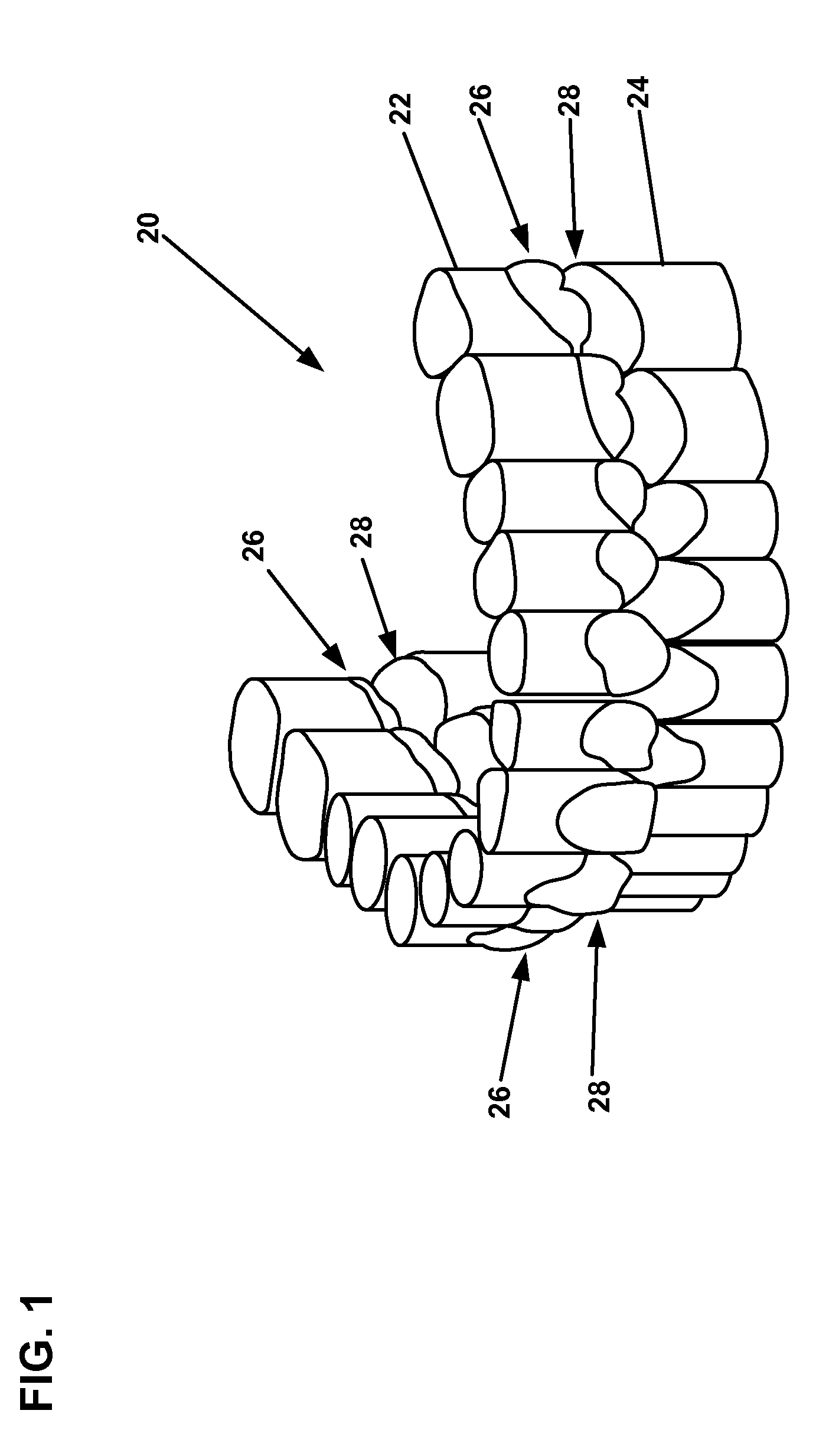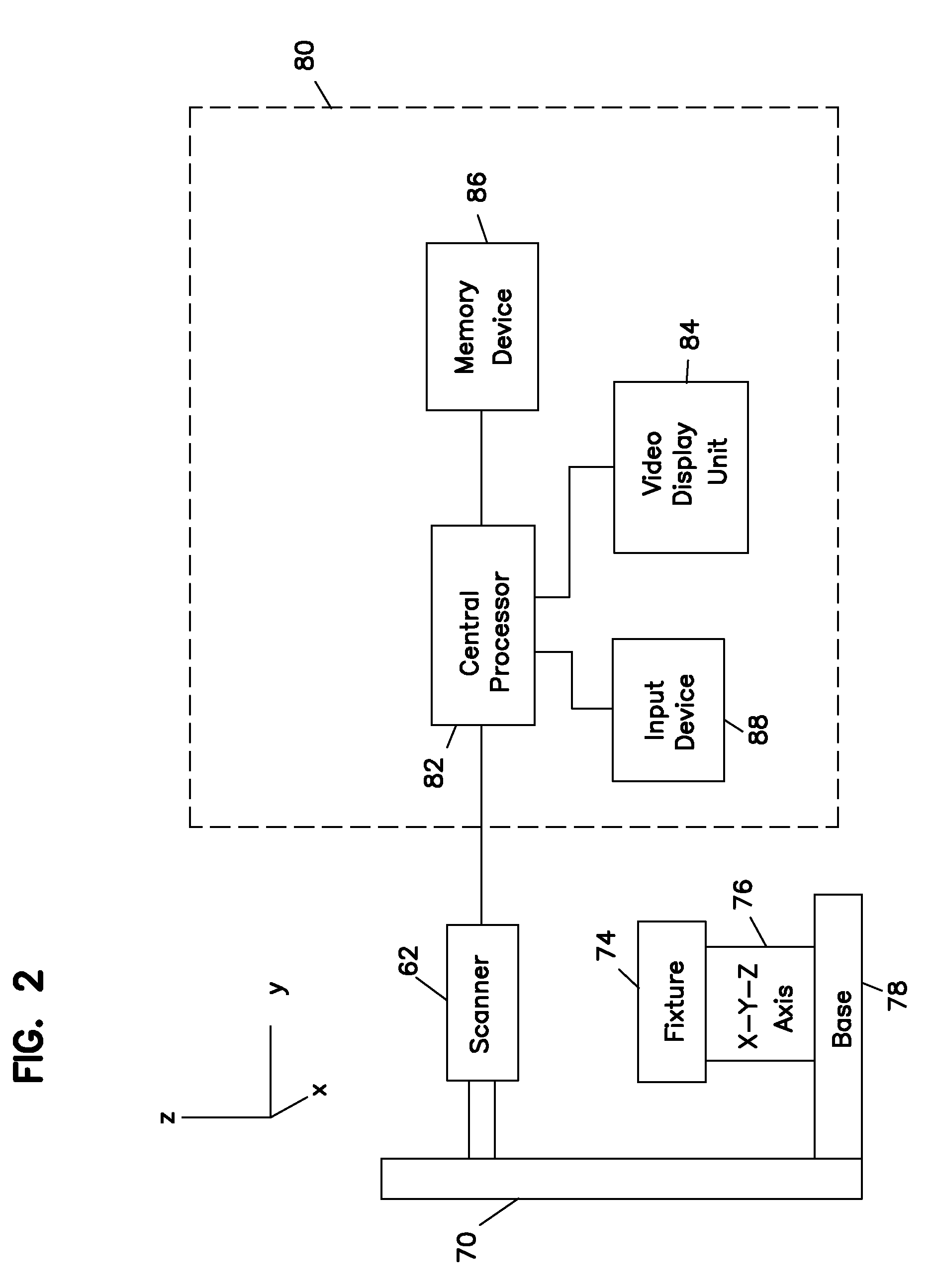Dental modeling system and method
a technology of dental modeling and model, applied in the field of dental modeling system and method, can solve the problems of insufficient precision in achieving accurate and precise tracking of tooth movement, difficult implementation in a practical manner, and insufficiently precise current techniques
- Summary
- Abstract
- Description
- Claims
- Application Information
AI Technical Summary
Benefits of technology
Problems solved by technology
Method used
Image
Examples
Embodiment Construction
[0030]Referring now to the drawings, and in particular to FIG. 1, there is shown a digital image of a patient's dentition 20 including an upper arch having a portion of the upper gums 22, and the exposed surfaces of the upper teeth 26. In a similar manner, a lower arch including a portion of the teeth and lower gums 24 is also created in a digitized model along with the exposed upper surfaces of the lower teeth 28. Such an image of the dentition 20 is digitized and provides a virtual three dimensional image of the patient's teeth for diagnosis, treatment and correction. Such a method and system for creating such a virtual image of the patient's mouth is shown and described in U.S. Pat. No. 6,579,059, incorporated herein by reference. One method of creating digital images is taking a casting of the patient's teeth and creating a plaster model and scanning the plaster cast. The digitizing system 70 is shown in FIG. 2 and includes a scanner 72 that passes a laser over the plaster model...
PUM
 Login to View More
Login to View More Abstract
Description
Claims
Application Information
 Login to View More
Login to View More - R&D
- Intellectual Property
- Life Sciences
- Materials
- Tech Scout
- Unparalleled Data Quality
- Higher Quality Content
- 60% Fewer Hallucinations
Browse by: Latest US Patents, China's latest patents, Technical Efficacy Thesaurus, Application Domain, Technology Topic, Popular Technical Reports.
© 2025 PatSnap. All rights reserved.Legal|Privacy policy|Modern Slavery Act Transparency Statement|Sitemap|About US| Contact US: help@patsnap.com



